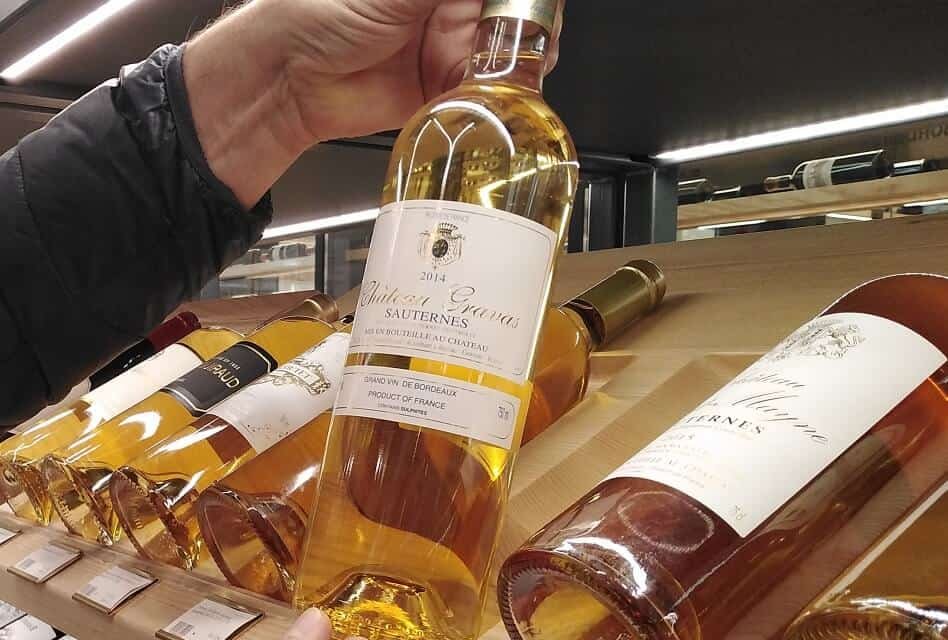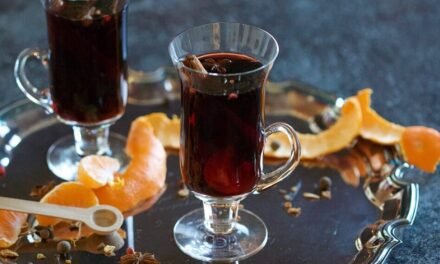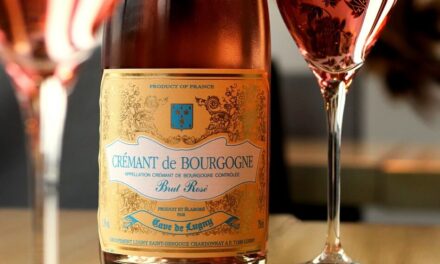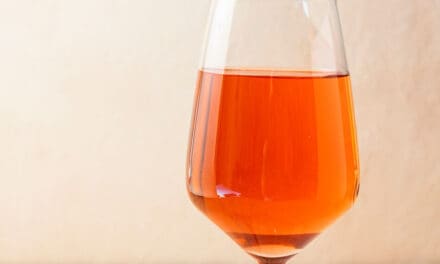Many people like dessert wines, and rightly so, because the sweet reds and whites are simply delicious. Among the most popular are Port wine, Sherry, and ice wine. Sauternes is a less well-known sweet wine. But it might be the most elegant style.
Sauternes is a white dessert wine from the Bordeaux region in France. Because the grapes to make it were infected with noble rot, it is very sweet. Nevertheless, Sauternes is an elegant, well-balanced wine featuring fruity, floral, nutty, and spicy aromas. In comparison, fortified dessert wines like Port or Sherry it has a relatively low alcohol level, though.
This article will discuss the origin, production, taste, and best serving practices for Sauternes.
WHERE DOES SAUTERNES WINE COME FROM?
Sauternes wines come from the Sauternes appellation in the Bordeaux wine region in Southwest France. It is located about 25 miles (40 kilometers) southeast of the city of Bordeaux, between the rivers Garonne and Ciron.
The two rivers are crucial for the quality of Sauternes wines. In fall, when it is warm and dry in the region, they have different temperatures: As the Ciron emerges from a spring, its water is significantly cooler than the Garonne. This discrepancy causes mist that fogs the vineyards at night. And this mist promotes the growth of noble rot that makes the wine so deliciously sweet. The sun then dries the grapes in the afternoon and stops the fungus’ spread before it can do irreparable damage.
Within the Sauternes region, five communes are permitted to label their wines as Sauternes:
- Barsac
- Bommes
- Fargues
- Preignac
- Sauternes
You might recognize the name Barsac. This commune is also the home of Barsac wines. They belong to the dessert wine category, too, but typically, they have less body and are even more elegant than Sauternes.

Wine Estate in the Sauternes Region
WHAT IS SAUTERNES MADE FROM?
Bordeaux winemakers use three white grape varieties to make Sauternes wine:
- Sémillon grapes are the main ingredient. Their thin skins make them easy targets for the Botrytis fungus, making them perfect for producing noble rot wines.
- Sauvignon Blanc grapes are high in acidity. Thus, vintners use them to balance the relatively low acidity of Sémillon.
- Muscadelle adds delicious floral notes to the flavor mix.
HOW IS SAUTERNES MADE?
The secret of Sauternes’ sweetness is noble rot. Noble rot is a condition caused by a fungus called Botrytis cinerea. Its spores are carried to vines by the wind, but they can also overwinter in plant debris.
Humidity promotes its growth and allows it to spread in the vineyard. The fungus first appears as tiny black dots on grapes. Over time, it covers the fruits with a thin, grey coat and causes them to dehydrate, shrivel, and get a brownish color. They do not split, though. When it is time for harvest, the grapes look like raisins.
The fungus consumes most of the grapes’ liquid and a significant portion of their sugar during the dehydrating process. The remaining sugar concentrates in a very small amount of grape juice which becomes incredibly sweet. In addition, the fungus metabolizes the grapes’ acids and creates new aroma components, giving the juice a unique flavor.
Harvesting these grapes might be complicated. As the fungus might not infect and dry all grapes at the same time, many winemakers do multiple rounds of harvesting and hand-pick single grapes instead of entire bunches. For that reason, machine harvesting isn’t an option for vintners.
Fermenting the sweet, syrupy juice results in high-alcohol wines that still contain an enormous amount of sugar. So, they are both strong and sweet, without the need to add liqueur, like it is common for Port, Madeira, or other fortified wines. Achieving this result needs a lot of time: Fermentation usually takes several months. For comparison, fermenting dry table wines typically requires not more than two to four weeks.
Following the fermentation, vintners age their wines in oak barrels. They mature for slightly less than two years on average. In some cases, winemakers extend the aging period to up to 36 months.
HOW DOES SAUTERNES WINE TASTE?
Sauternes wines are sweet, full-bodied wines with intense flavors of citrus and tropical fruits such as apricot, mango, or peach. Often, they also feature nutty, spicy, or floral notes. The wines have high acidity and alcohol volumes of 13 to 15%. Nevertheless, they do not taste overly alcoholic or acidic because they have an outstanding balance.
HOW TO SERVE SAUTERNES?
You can enjoy Sauternes on its own or with dinner. As it belongs to the dessert wine category, it makes perfect sense to serve it with the last course. But in France, it is also common to drink it as an aperitif before the starter course.
In any case, you should ensure that it has the perfect temperature and comes in the right glass.
What Is the Best Serving Temperature for Sauternes?
Sauternes wines should be served at around 50 to 55°F (10-13°C). So put it into your fridge for 30 to 60 minutes before opening the bottle.
What Is the Right Glass for Sauternes?
The best glass for Sauternes is a special Sauternes glass or a dessert wine glass. Both have bowls with a distinctive curved shape that looks like an upside-down pear. This design helps bring out the fruity aromas while emphasizing the wine’s acidity at the same time.
Instead of these special glasses, you can choose a regular white wine glass or a rosé glass. Its bowl should not be too big, though.
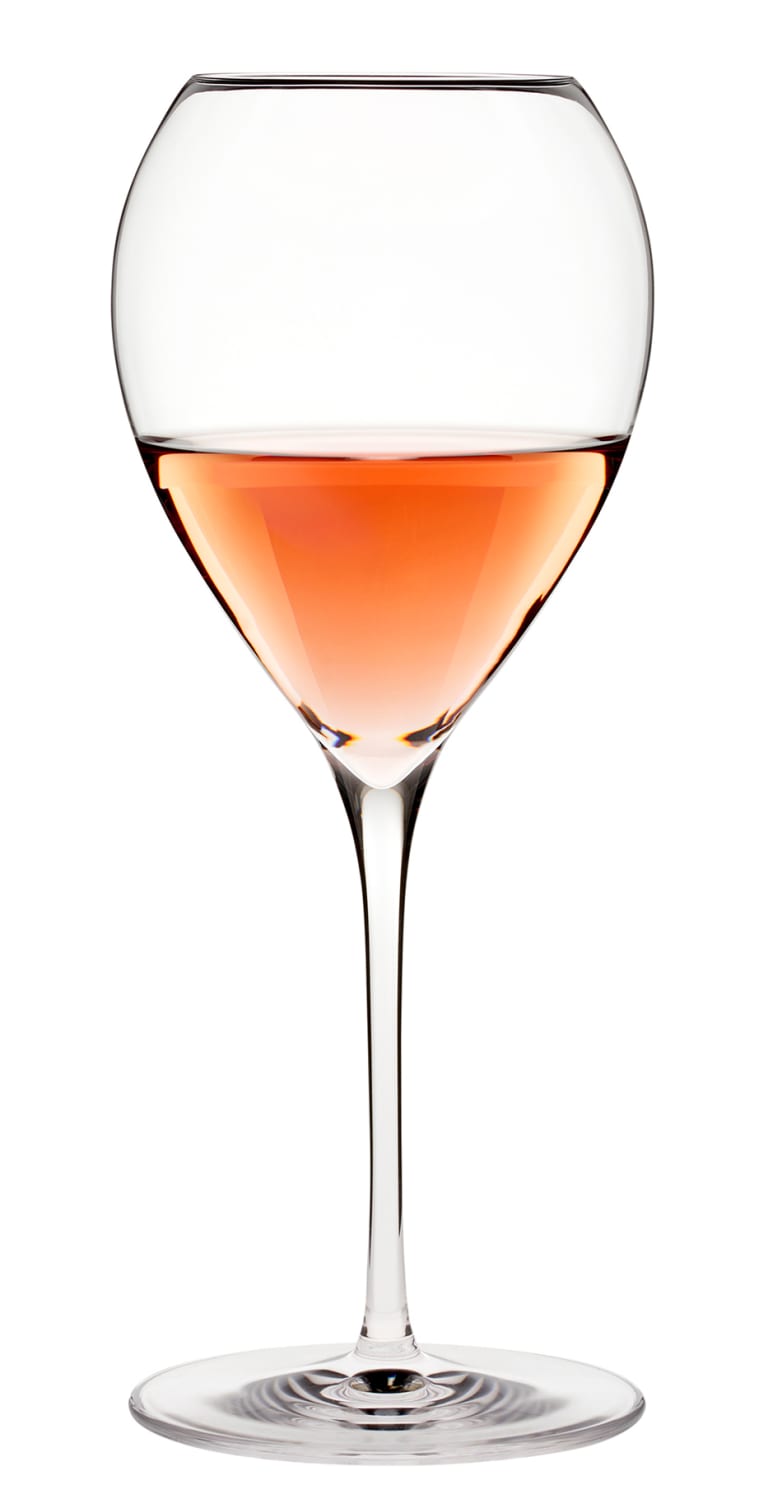
Crisp & Fresh Flavor First Wine Glasses (Set of 6)
$59.95
from: Wine.com
Should You Decant Sauternes Wine?
Decanting is absolutely beneficial for Sauternes wines. It helps them fully release their delicious sweet fruit aromas. Especially older bottles you have stored for several years benefit from contact with oxygen. Decant them for up to 30 minutes to open up. Younger styles typically don’t need more than 15 minutes.
As the serving temperature is crucial, you might want to chill the wine while decanting. Ice buckets or ice tubes are proper tools for this purpose.
HOW TO STORE SAUTERNES?
The best way to store Sauternes wine is to keep it in a dark and cool place. Shield it from temperature changes, sunlight, aggressive chemical smells, and vibrating devices, and it will be fine.
A spot in your basement is fine; a wine fridge is even better. In any case, you should store the bottle lying on its side, so the cork is in touch with the wine and will not dry out.
Can Sauternes Wines Go Bad?
Sauternes wines can go bad if you mistreat them intentionally. Leaving a bottle exposed to sunlight for a significant time period or failing to cool an open bottle can cause it to spoil.
How Long Does Sauternes Last When Open?
Sauternes wine lasts for at least one week after opening. It is much more resilient than regular table wines because it was affected by noble rot and got in touch with oxygen during the production process. Nevertheless, you should reseal the bottle and keep it in the fridge.
Can You Age Sauternes?
You can age Sauternes for at least two years. High-quality wines can be aged even longer. They will develop further over a period of 20 years or longer. During that time, it will develop new aromas and get even better in taste.
SAUTERNES FOOD PAIRING
It’s logical to enjoy a dessert wine like Sauternes with your meal’s last course. It is a proper pairing for sweet dishes as soon as the wine dominates. Thus, avoid matching it with sweeter desserts such as ice cream.
Sauternes works very well many dessserts, especially from the French cuisine. Try it with fruit tarts, creamy dishes like Crème Brulée, and ripe fruits, including strawberries (with cream), peaches, or roasted pineapple. And if you are a chocolate lover, feel free to combine it with dark chocolate.
It might be surprising, but you can pair Sauternes with savory dishes, too. A staple in French cuisine that is often served with sweet wine is Foie Gras. And, of course, you can pair the wine with similar dishes like chicken or duck liver parfait.
Another exciting pairing comes from Asia: Thai dishes that feature sweet and spicy aromas are excellent with Sauternes.
Finally, consider enjoying a glass with cheese. In particular, blue cheeses such as Roquefort are great matches. The combination of pungent and salty notes with sweet wines is simply delicious.
SAUTERNES SHOPPING GUIDE
Sauternes wines are protected by European Union laws. That means winemakers outside the official appellation may not label their products with this term. So if you find a bottle from France labeled as Sauternes, you can be sure to get the original and not a copycat.
However, bottles are worth a second look. The reason is that vintners from the region also produce dry wines. So double-check to make sure you actually get the sweet version. The bottle size is a good hint: Many sweet wines come in a half-bottle of 375ml. In contrast, dry wines from the region usually come in regular-sized bottles of 750ml.
Be aware that Sauternes wines are relatively expensive. The reason is the costly production process: The noble rot-infected grapes produce significantly less juice per fruit than regular wine grapes. So it simply requires more juice to make a bottle of wine. Besides, the fermentation and aging process takes more than two years, which is reflected in the prices. Be prepared to pay at least 20 USD for a bottle of 375ml. Old vintages can cost hundreds, in some cases thousands of dollars.
Chateau Bastor-Lamontagne Sauternes 2016
- type: white, still, Vintage
- origin: France, Bordeaux
- varietal: Sauvignon Blanc, Semillon
- alcohol: 14.0%
Chateau Guiraud Sauternes 2020
- type: white, still, Vintage
- origin: France, Bordeaux
- varietal: Sauvignon Blanc, Semillon
- alcohol: 13.5%
Chateau d'Yquem Sauternes 1999
- type: white, still, Vintage
- origin: France, Bordeaux
- varietal: Sauvignon Blanc, Semillon
- alcohol: 14.0%
FINAL WORDS
Without a doubt, Sauternes wines belong to the best of all sweet wines. They are somewhat expensive but worth every single penny. So if you have not done so yet, you absolutely should try these elegant, well-balanced dessert wines.

